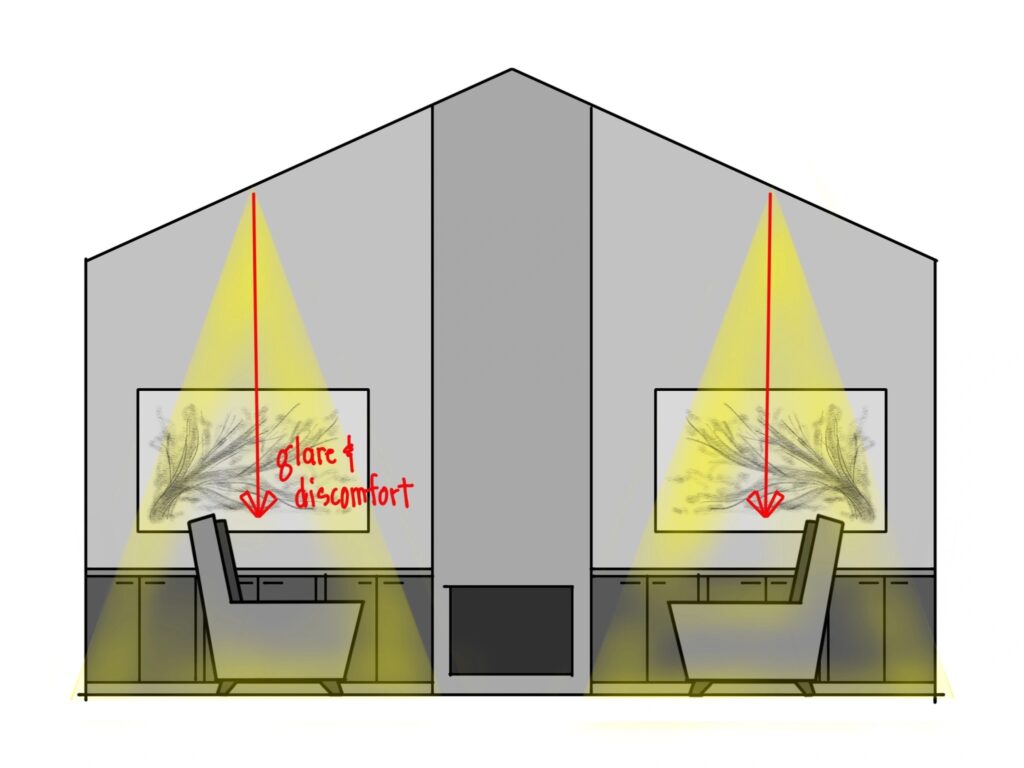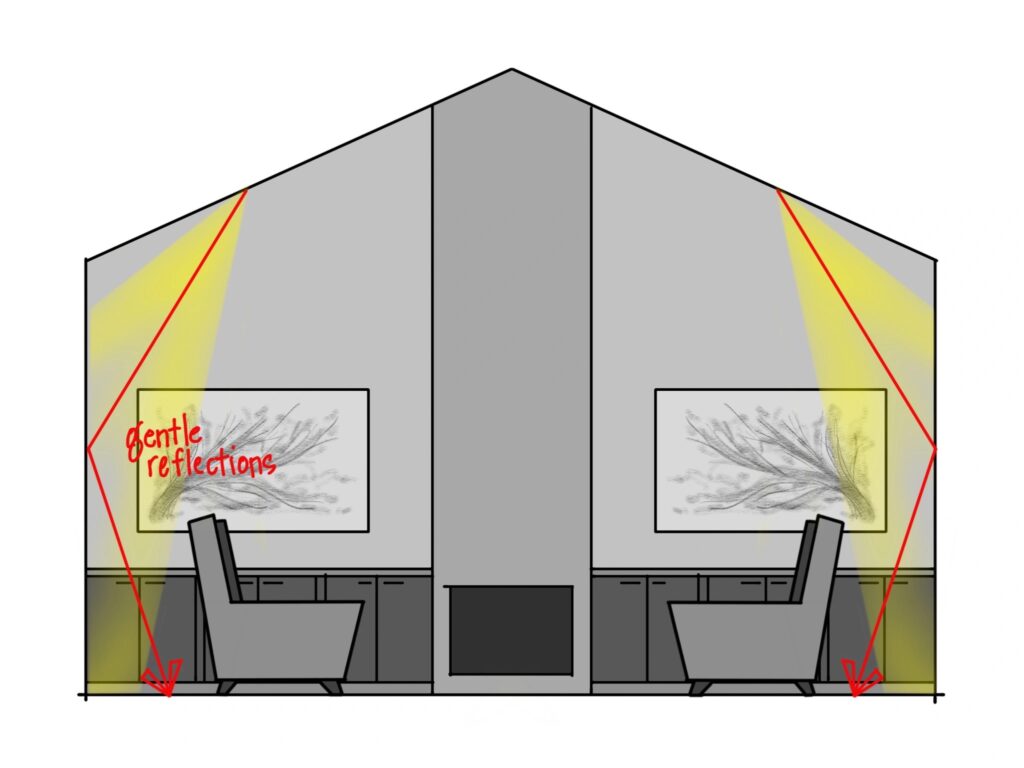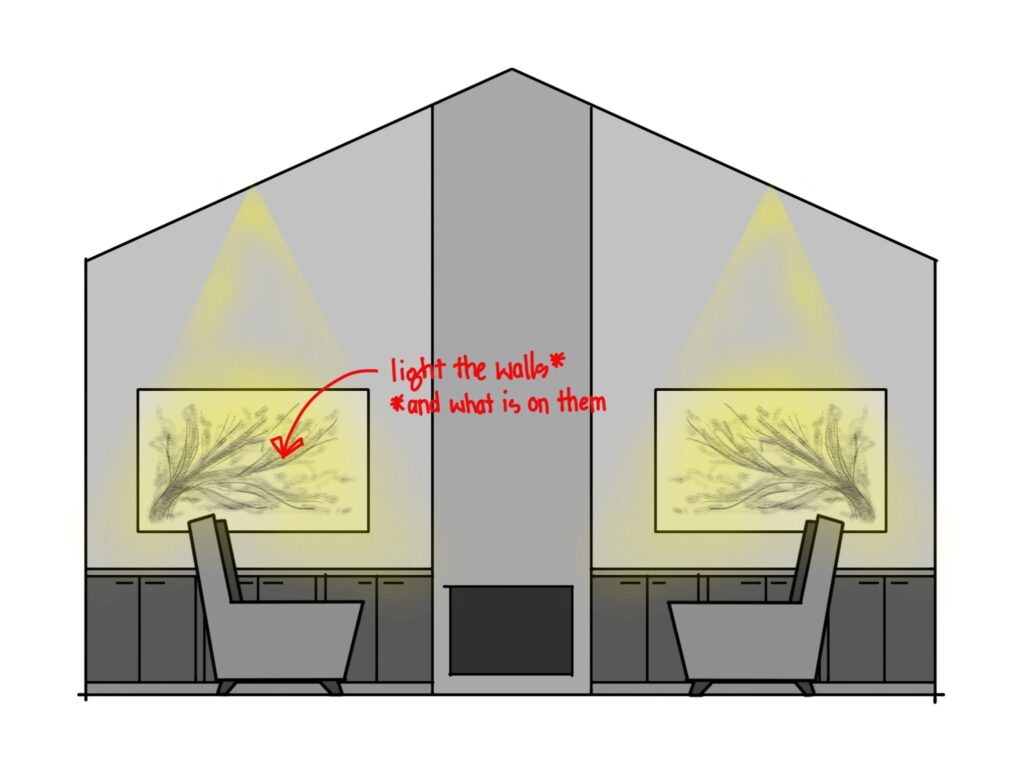This post is the third in my 1THING: New Builds series designed to boil better lighting down to the bare essentials. And I promise I’ll get to the subject – living rooms – in just a moment. But first, I owe you an apology.
One of the benefits of blogging – at least the way I blog – is that perfection is not the goal. Writing a magazine article comes with a little more pressure to “get it right,” to hone the writing, to make every sentence engaging. I imagine writing a book provides even greater pressure towards perfection. Those of you who have read more than one post here and discovered the typos or the questionable grammatical structures, or wondered what the heck I was trying to say know that perfection is not something I do here.
This post is further proof (hence the apology) that I am far from perfect. I’m trying to say something here – that adding light to help you feel good is key to a comfortable living room – but the creativity I strive for just didn’t seem to flow. The idea is solid, the expression a little lackluster for my tastes.
And that is why I enjoy blogging. I get to try out ideas, ramble a bit, explore concepts, and follow a meandering path that generally tends towards sharing the gift of light with anyone willing to listen.
Okay, let’s get to it. If you were building a new living room and could choose only one kind of lighting for permanent installation, what would it be?
The first thing that popped into my head is cove lighting, hidden lights that reflect off the ceiling filling the room with soft, even light. On further reflection, however, I changed my mind. I love cove lighting, but it is not the 1THING I would choose if I could only wire up one solution.
There is a sweet spot in every room that we will call the feel good zone, or the place for light that helps us feel better. That spot is not the ceiling, but is what we see when we sit down and look straight ahead. Look up from the screen you are using to read this blog post. What do you see? Don’t stretch your neck to see the ceiling, just look across from you. That’s the sweet spot, the feel good zone.
For most of us, our gaze will eventually end either 1) out a window or 2) at a wall. Windows are fantastic (during the daytime), so I’ll concentrate on the walls. That’s where I want the light.

Most living rooms are lit only with straight downlights (or worse, disc/wafer lights or even worse, ceiling fan lighters). This is great for vacuuming the carpets and not so good for everything else. My primary objection is that it puts strong light into the area of the eye most susceptible to glare and discomfort. So forget these lights, if you only have one choice.

Using adjustable recessed downlights, or mono points or track lights, we can aim the light at the walls. The light then bounces into the room, softly diffused and indirect. This light is right where we need it to feel good.

Choosing this technique has another benefit if you just so happen to have anything on your walls. We have an eclectic mix of art and family photographs on ours. Light aimed at the walls illuminates these objects and that increases our enjoyment of the objects themselves (isn’t that the point of having them?). And if you spent good money for beautiful art, why are your lights pointed at the carpet?
If I could choose only one technique to hardwire into my next living room, I’d choose lighting that can bounce off the walls in the sweet spot of the feel good zone.
And one more thing…

As with all of the 1THING posts, I am including one more thing, the second lighting technique I would include in a living room if budget allowed. If I have the walls covered with light, my next move would be to bounce light gently off the ceiling. This adds another layer of comfort, lifts the ceiling, and delivers 100% glare-free illumination to the entire room when done properly. Now I just need to find a solution that does both at once….
